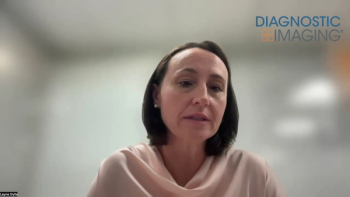
Survey challenges recommended use rate for imaging reimbursement
The Radiology Business Management Association has called into question a recommendation to increase the assumed utilization rate from 50% to 90% for the relative value unit scale used to calculate outpatient Medicare payment rates for high-tech imaging procedures.
The Radiology Business Management Association has called into question a recommendation to increase the assumed utilization rate from 50% to 90% for the relative value unit scale used to calculate outpatient Medicare payment rates for high-tech imaging procedures. A survey conducted by the association challenges findings from an earlier survey that informed the recommendation by the Medicare Payment Advisory Commission.
The RBMA study of 261 imaging machines in 46 centers found that imaging equipment in rural areas is used 48% of the time, whereas the utilization rate for urban areas falls well under 60%. The data suggest that the utilization rate assumed by the Centers for Medicare and Medicaid Services is similar to the actual rate at which imaging equipment operates. CMS assumes a utilization rate of 25 hours per week, or 50%, to calculate the reimbursement for the technical portion of imaging services.
In its annual report to Congress in March, MedPAC recommended raising the assumed weekly utilization rate to 45 hours, or 90%, for diagnostic imaging equipment costing more than $1 million. MedPAC's recommendation was based on its own survey of 133 facilities in six urban regions that found the median hours of use for CT and MRI were 40 and 46, respectively. The Obama administration has since asked Congress to adopt a 95% utilization assumption.
MedPac is an independent congressional agency composed of a 17-member citizen appointee panel and a professional staff that advises Congress about Medicare practices and policy.
Increasing the imaging utilization rate to significantly higher levels than actual use could lead to reimbursement cuts that will impair access to imaging services and cause patients to delay or forgo necessary imaging procedures, according to the Alliance for Medical Imaging Coalition. In a written statement, the organization argued that these cuts may have devastating consequences for patients in rural areas.
"Spending on advanced imaging has decreased significantly since 2005, and imaging use has essentially flattened," said AMIC executive director Tim Trysla. "Any further deep imaging reimbursement cuts will severely disrupt patients' access to diagnostic services."
RBMA figures are more accurate than those proposed by Congress and the Obama administration and mirror actual imaging equipment utilization rates in both urban and rural practices, said RBMA executive director Michael Mabry.
"Since MedPAC's utilization rate survey was based on only six urban regions, we understand policymakers' need to continuously collect accurate use rate data to inform their reimbursement decisions. RBMA is committed to collecting and providing those data on an ongoing basis," he said.
AMIC officials state that MedPAC's 90% utilization rate is based on "deeply flawed" data collected before the enactment of the Deficit Reduction Act of 2005 and that it does not consider the impact on rural providers. The group has criticized MedPAC's 2006 survey as not truly representative of imaging utilization practices across the nation. AMIC officials also noted that MedPAC itself cautioned against using its survey to determine equipment use rates.
In defense of MedPAC's recommendation, a source familiar with its deliberations noted two independent data sources that indicate that MR and CT utilization rates are in the 80% to 90% range.
The RBMA findings point to inherent problems with the reimbursement rates for imaging systems, according to the source. Speaking on background, he said a higher assumed use rate is justified to cut reimbursement, if the scanners can be operated profitably despite sitting idle half the time. Higher assumed use rates are considered good public policy because they wring inefficiencies out of the market.
Newsletter
Stay at the forefront of radiology with the Diagnostic Imaging newsletter, delivering the latest news, clinical insights, and imaging advancements for today’s radiologists.



























